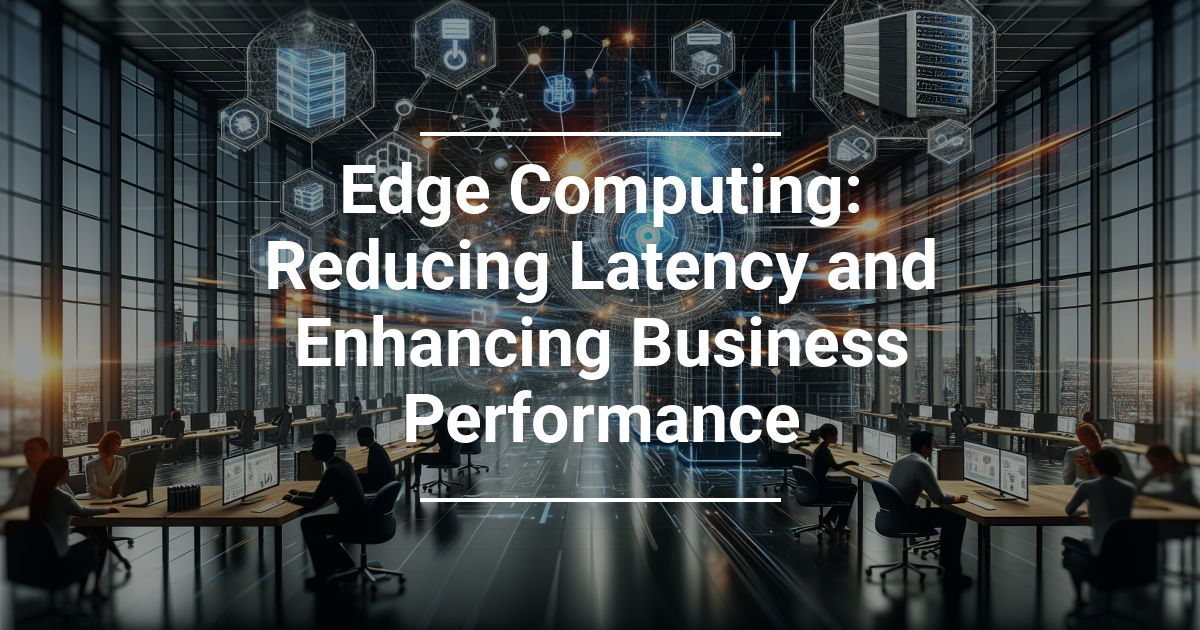
Edge Computing: Reducing Latency and Enhancing Business Performance
Companies are constantly managing multiple online processes at once, from uploading and downloading content to addressing customer concerns across platforms. However, the more processes, systems, and devices you integrate into your business, the more latency you may experience. This lag can prevent your brand from reaching its full potential. Luckily, edge computing offers a solution to reduce latency and improve performance.
Centralized Data Centers Versus Edge Computing
Traditionally, company devices—such as phones, desktops, and even IoT devices like smart thermostats—are connected to a centralized cloud or data center. This setup means that data from all devices travels to a single location for processing, which can create bottlenecks, slow down operations, and increase security risks. The further the data has to travel, the greater the latency and the higher the risk to your business's sensitive information.
In contrast, edge computing relies on numerous servers located closer to where the data is being collected. This decentralized approach allows businesses to:
- Reduce latency by shortening the distance data must travel.
- Enhance security by keeping sensitive data within local servers.
- Enable real-time processing for better decision-making.
Less Latency Than Cloud Computing
When data is sent to the cloud or a centralized data center, it has to travel long distances. This creates delays because the data must be collected, processed, and then returned to the originating device before operations can continue. The more data being processed and the longer the distance, the greater the strain on the network, leading to slowdowns.
With edge computing, devices send data to the nearest server instead of a distant central location. This significantly reduces the load on the network, improving processing speeds and reducing latency. This makes edge computing an ideal choice for businesses that require fast data processing and response times.
More Security With Short Data Traveling Distances
One major concern with cloud computing is security. Sending raw, unencrypted data to an external cloud provider increases the risk of exposure to unauthorized third parties. With edge computing, the data is processed locally at edge servers located within your business premises. This minimizes the risk of data theft and ensures that sensitive information stays secure.
Additionally, when data must be sent to the cloud, edge servers can encrypt it first, providing an added layer of protection. To learn more about cybersecurity tips for securing your business, check out our recommendations.
Real-Time Processing with Artificial Intelligence
Edge computing enhances real-time data processing, allowing businesses to react immediately to changes and incidents. With the help of artificial intelligence (AI), edge nodes and servers can analyze data in real-time and provide actionable insights.
For example, AI can monitor supply chain performance, alerting you when inventory needs replenishing or when specific products require re-marketing efforts. Additionally, AI tools can analyze customer behavior patterns, helping guide prospects through the buying journey and make more accurate predictions.
If you’re interested in how edge computing could streamline your business processes and improve performance, schedule a discovery call with us today to explore customized solutions.
Conclusion
Edge computing is a game-changer for businesses seeking to reduce latency, improve security, and gain access to real-time data insights. By processing data closer to where it’s generated, businesses can operate more efficiently and securely. If you’re ready to explore how edge computing can enhance your company’s performance, contact us to learn more about our cloud computing solutions.



